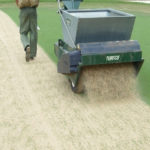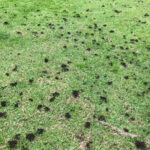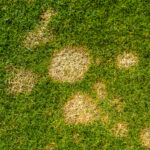
From the very beginnings of the game of bowls, most clubs bowled on a green constructed largely of local top soil, built, prepared and seeded by the club members, perhaps with the help of a local gardener or farmer. Maintenance was largely mowing, turning the rinks on flat greens, keeping the surface clear of debris and worm casts and an occasional roll before a big match. In the autumn, a squad of members would descend on the green with forks to aerate or spike the green, before putting it to bed for the winter with a final cut and perhaps a bag of fertiliser.




